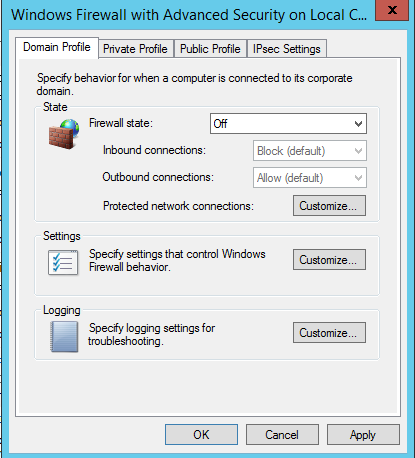
In Remote Desktop Services Deployment Options in Windows Server 2012 R2 on Petri, I walked you through the available deployment options, but in this article I’d like to show you how to use Server Manager to deploy RDS. This is relevant only for cluster and multisite deployments.In today’s Ask the Admin, I’ll show you how to install RDS in Windows Server 2012 R2. The Remote Access server to which clients are connected. The value that corresponds to this field is the hostname/IP address of the server. This is Teredo, 6to4, or IP-HTTPS for DirectAccess users, and it is PPTP, L2TP, SSTP, or IKEv2 for VPN users.Īll users who are accessing a particular corporate resource or an endpoint. The transitioning technology that is used by the remote client. The inner IPv6 address of the tunnel that connects the remote user to the corporate network. The inner IPv4 address of the tunnel that connect the remote user to the corporate network.

The IPv4 or IPv6 address of the remote user. If VPN is selected, all remote users who are connected by using VPN are listed. If DirectAccess is selected, all remote users who are connected by using DirectAccess are listed.

An IPv4 or IPv6 address also can be specified.ĭirectAccess or VPN. The computer account name of the remote user. Wildcard characters can be used to select a group of users, such as contoso\* or *\administrator. The user name or alias of the remote user. The user statistics can be filtered, based on criteria selections, by using the fields in the following table. Enter each cmdlet on a single line, even though they may appear word-wrapped across several lines here because of formatting constraints. The following Windows PowerShell cmdlet or cmdlets perform the same function as the preceding procedure.

When you select a row, the remote user activity is shown in the preview pane. Click the first row in the list that corresponds to a client. You will see the list of users who are connected to the Remote Access server and detailed statistics about them. In Server Manager, click Tools, and then click Remote Access Management.Ĭlick REPORTING to navigate to Remote Access Reporting in the Remote Access Management Console.Ĭlick Remote Client Status to navigate to the remote client activity and status user interface in the Remote Access Management Console. To monitor remote client activity and status

If you cannot complete a task while you are signed in with an account that is a member of the Administrators group, try performing the task while you are signed in with an account that is a member of the Domain Admins group. You must be signed in as a member of the Domain Admins group or a member of the Administrators group on each computer to complete the tasks described in this topic.


 0 kommentar(er)
0 kommentar(er)
